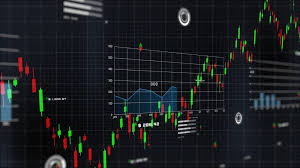Crypto Trading Technical Tools 5

Understanding Crypto Trading Technical Tools
The world of cryptocurrency trading is complex and can be daunting for newcomers. However, with the right set of technical tools, traders can analyze market trends, make informed decisions, and ultimately enhance their trading strategies. In this article, we will delve into various crypto trading technical tools and how to utilize them effectively. For a deeper dive into technical analysis techniques, you can visit Crypto Trading Technical Tools https://www.newsvoir.com/index.php?option=com_content&view=catnews&catid=114&Itemid=37&page=166.
1. Price Charts
Price charts are the most fundamental tools for any trader. They help visualize the price movements of cryptocurrencies over various timeframes. Common types of charts include line charts, bar charts, and candlestick charts. Among these, candlestick charts are particularly popular due to the wealth of information they convey. Each candle represents price movement for a specific duration and illustrates the open, close, high, and low prices, giving insight into market sentiment.
1.1. Types of Charts
In crypto trading, there are several types of charts that traders commonly use:
- Line Charts: Best suited for viewing price trends over a specific period.
- Candlestick Charts: Provide detailed information and help identify potential reversals.
- Bar Charts: Similar to candlestick charts, but may be less visually effective.
2. Technical Indicators
Technical indicators are mathematical calculations based on the price, volume, or open interest of a cryptocurrency. These indicators assist traders in making educated guesses about future price movements. Some of the widely used indicators in crypto trading include:
2.1. Moving Averages
Moving Averages (MAs) smooth out price data to identify trends over a specific period. The simplest forms of moving averages are the Simple Moving Average (SMA) and the Exponential Moving Average (EMA). While SMA treats all data points equally, EMA gives more weight to the most recent prices, making it more responsive to new information.
2.2. Relative Strength Index (RSI)
The RSI is a momentum oscillator that measures the speed and change of price movements. It ranges from 0 to 100, with values above 70 indicating overbought conditions and values below 30 indicating oversold conditions. Traders often use the RSI to identify potential reversal points.
2.3. Bollinger Bands
Bollinger Bands consist of a middle band (SMA) and two outer bands that are standard deviations away from the middle. These bands expand and contract based on market volatility; prices tend to bounce between the bands, providing traders with potential entry and exit points.
3. Trading Platforms
A robust trading platform is essential for executing trades, analyzing charts, and utilizing technical tools effectively. Several platforms offer a variety of features, including real-time market data, advanced charting tools, and algorithmic trading options. Some of the well-known trading platforms include:

- Binance: Supports various cryptocurrencies and offers advanced trading features.
- Coinbase Pro: Provides a user-friendly interface and a variety of trading tools.
- Kraken: Known for its security features and robust charting capabilities.
4. Risk Management Tools
Risk management is a crucial aspect of trading. Several tools can help traders manage risk more effectively, including stop-loss orders, take-profit orders, and position sizing calculators. By utilizing these tools, traders can protect their capital and minimize losses during adverse market movements.
4.1. Stop-Loss Orders
Stop-loss orders automatically sell a cryptocurrency when it reaches a predetermined price, helping to mitigate losses. Setting an appropriate stop-loss level is an important part of any risk management strategy.
4.2. Take-Profit Orders
On the flip side, take-profit orders lock in profits when the price reaches a specific level. Combining both stop-loss and take-profit orders allows traders to ensure that their trades are managed without constant monitoring.
4.3. Position Sizing Calculators
Position sizing calculators help traders determine the appropriate amount of capital to risk on a particular trade based on their overall portfolio and risk tolerance.
5. Sentiment Analysis Tools
Understanding market sentiment can provide valuable insights into the behavior of other traders. Sentiment analysis tools aggregate data from social media, news, and other online sources to gauge public sentiment regarding specific cryptocurrencies. This information can be helpful in predicting price movements based on crowd psychology.
5.1. Social Media Sentiment Tools
Tools that analyze sentiments on platforms like Twitter and Reddit can offer real-time insights into market feelings. Tools like The TIE or Santiment provide sentiment analysis based on tweets or posts, and can help traders understand potential market reactions.
5.2. News Aggregators
Staying updated with crypto news is crucial. News aggregators compile articles from various sources, helping traders stay informed about significant events that could impact the market.
Conclusion
Utilizing technical tools in crypto trading can significantly enhance the decision-making process, allowing traders to develop more effective strategies and manage risks more efficiently. By mastering price charts, technical indicators, risk management tools, and sentiment analysis, traders can better navigate the volatile crypto landscape. As you continue to refine your trading skills, remember to stay informed and adapt to the ever-changing market conditions.
